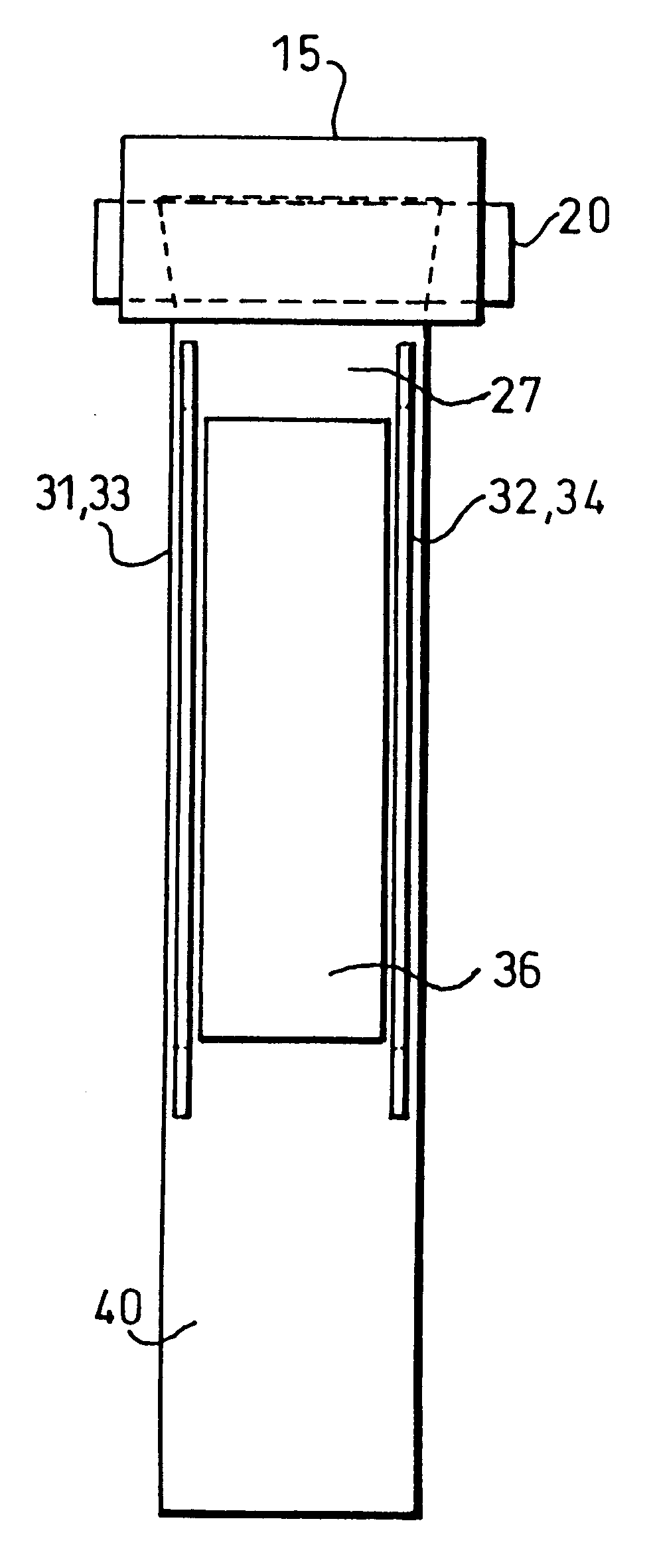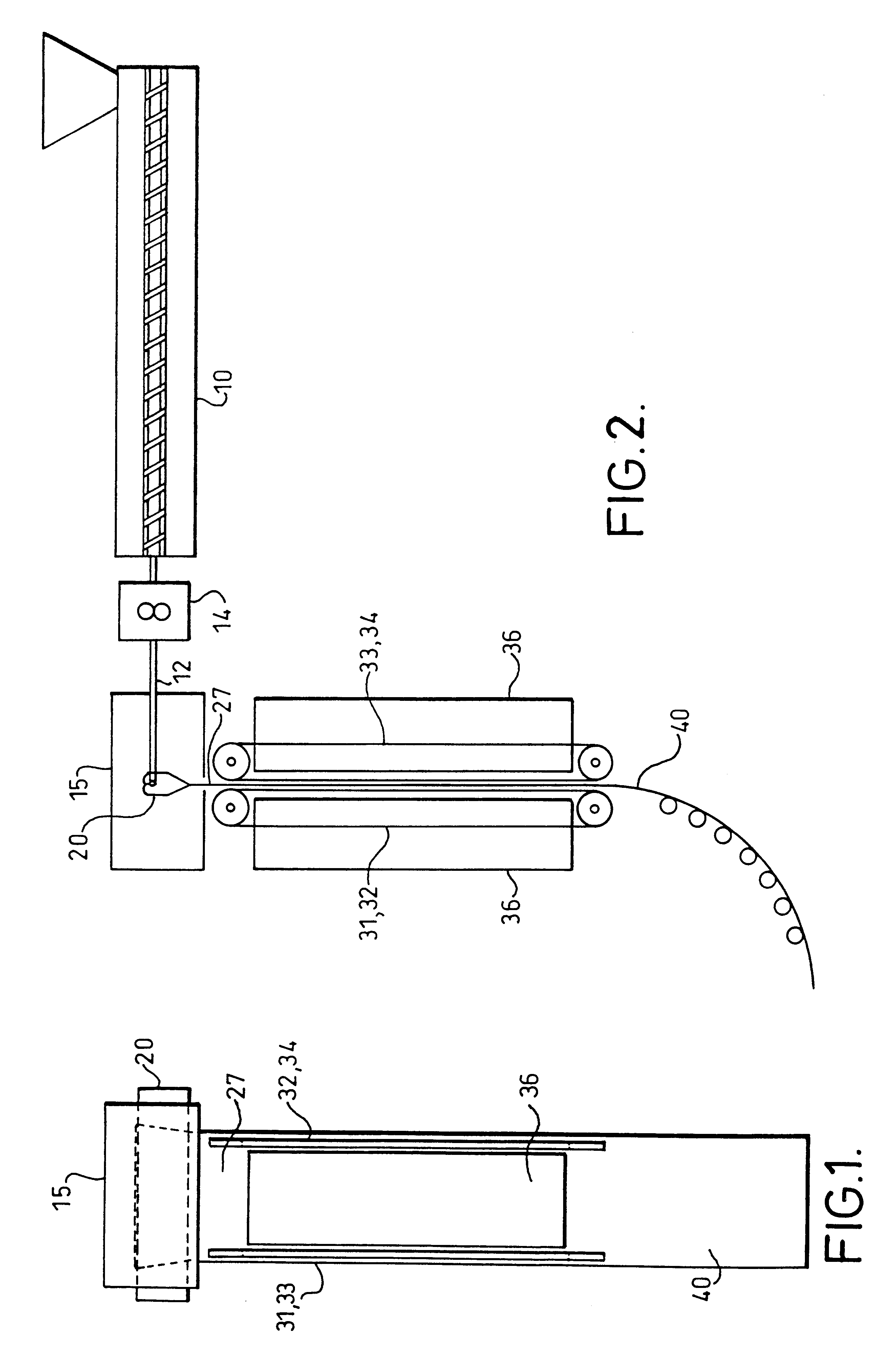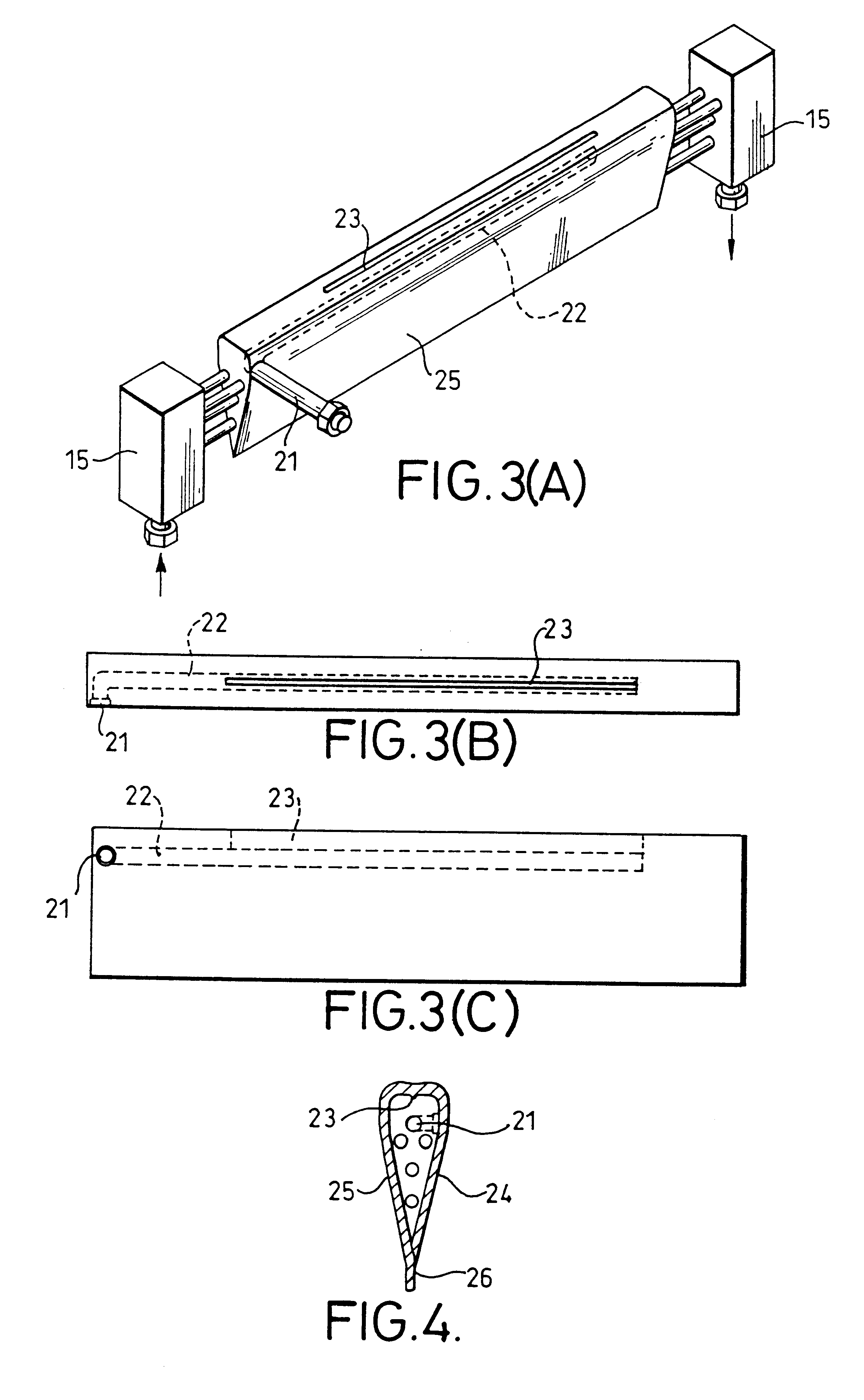Process and apparatus for forming plastic sheet
a technology of plastic sheet and process, applied in the field of optical storage medium, can solve the problems of low density, flexibility and impact resistance, material not having some of the desired mechanical properties, and it is difficult to produce plastic sheet with the requisite optical specifications needed for use in optical and display applications at reasonable costs, so as to achieve low cost, reduce surface roughness, and reduce birefringence
- Summary
- Abstract
- Description
- Claims
- Application Information
AI Technical Summary
Benefits of technology
Problems solved by technology
Method used
Image
Examples
example 2
Preparation of Imidized Acrylic Sheet
This example illustrates the method of the present invention used to produce optical quality imidized acrylic sheet.
A capped imidized acrylic resin having an weight average molecular weight of 108,000 and a glass transition temperature of about 180.degree. C. was starve-fed into a 2 inch (5 cm) diameter single screw vented two-stage extruder having a 30:1 L:D ratio at a rate of 2.5 g / s using a gravimetric feeder. The extruder barrel had a temperature profile from 246.degree. C. at the feed end to 329.degree. C. at the discharge end. The resin was devolatilized using a devolatilization vent operating at 720-750 mm Hg. The screw was rotated at 30 rpm. A gear-type melt pump was used to pump the molten resin through a screen pack filter to a 25.5 inch (65 cm) long overflow die with a 1.588 cm diameter internal conduit and a 16 inch (40 cm) long slot tapering from 0.038 to 0.042 inch (0.965 to 1.067 mm). The melt pump temperature was 329.degree. C. Th...
example 3
Preparation of Polycarbonate Sheet
This example illustrates the method of the present invention used to produce optical quality polycarbonate sheet.
Extrusion-grade polycarbonate resin (Lexan 101, GE Plastics, Pittsfield, Mass.) was starve-fed into a 2 inch (5 cm) diameter single screw vented two-stage extruder having a 30:1 L:D ratio at a rate of 4.4 g / s using a gravimetric feeder. The extruder barrel had a temperature profile from 232.degree. C. at the feed end to 315.degree. C. at the discharge end. The resin was devolatilized using a devolatilization vent operating at 720-750 mm Hg. The screw was rotated at 30 rpm. A gear-type melt pump was used to pump the molten resin through a screen pack filter to a 37.5 inch (95 cm) long overflow die with a 1.905 cm diameter internal conduit and a 28 inch (71 cm) long slot tapering from 0.038 to 0.045 inch (0.965 to 1.143 mm). The melt pump temperature was 315.degree. C. The melt pump suction pressure was approximately 3400 kPa. The melt pump...
example 4
Preparation of Polycarbonate Film
This example illustrates the method of the present invention used to produce optical quality polycarbonate film.
Extrusion-grade polycarbonate resin (Lexan 101, GE Plastics, Pittsfield, Mass.) was starve-fed into a 2 inch (5 cm) diameter single screw vented two-stage extruder having a 30:1 L:D ratio at a rate of 2.5 g / s using a gravimetric feeder. The extruder barrel had a temperature profile from 232.degree. C. at the feed end to 315.degree. C. at the discharge end. The resin was devolatilized using a devolatilization vent operating at 720-750 mm Hg. The screw was rotated at 30 rpm. A gear-type melt pump was used to pump the molten resin through a screen pack filter to a 37.5 inch (95 cm) long overflow die with a 1.905 cm diameter internal conduit and a 28 inch (71 cm) long slot tapering from 0.038 to 0.045 inch (0.965 to 1.143 mm). The melt pump temperature was 315.degree. C. The melt pump suction pressure was approximately 3400 kPa. The melt pump d...
PUM
| Property | Measurement | Unit |
|---|---|---|
| length | aaaaa | aaaaa |
| length | aaaaa | aaaaa |
| length | aaaaa | aaaaa |
Abstract
Description
Claims
Application Information
 Login to View More
Login to View More - R&D
- Intellectual Property
- Life Sciences
- Materials
- Tech Scout
- Unparalleled Data Quality
- Higher Quality Content
- 60% Fewer Hallucinations
Browse by: Latest US Patents, China's latest patents, Technical Efficacy Thesaurus, Application Domain, Technology Topic, Popular Technical Reports.
© 2025 PatSnap. All rights reserved.Legal|Privacy policy|Modern Slavery Act Transparency Statement|Sitemap|About US| Contact US: help@patsnap.com



